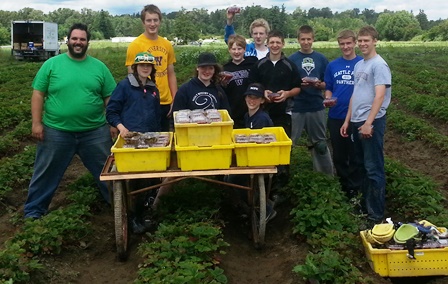Talk straight, be available and amenable, and use infrastructure to your advantage, if you can handle food by the pallet you can benefit from relationships with larger farms that can save labor and other costs.
Talk straight by doing exactly what you say. When working with farmers honesty is essential. Never commit to something that you or your volunteers can’t deliver. Be prompt, farmers are not all prompt but some are and would see it as a sign of unreliability if you are late. Also as appropriate shoot the breeze with the farmers. Having conversations not necessarily relevant to the donation relationship can help build the relationship, especially if you can note and later recall seemingly trivial facts.
Give the farmer a “carrot”. It is not possible in all situations, but if your site has the ability to purchase from local farms do it. Making a small purchase early in the season helps to build relationships for later donations when there is more availability, sometimes even at the time of purchase.
Do what works for the farm. When you are getting a donation from a farm or gleaning in their fields listen very carefully and clarify as much as possible. If the farmer feels like you have somehow transgressed upon the terms of the relationship they may not donate or allow gleans in the future. Be sure to ask extra questions if you are not sure as the farmer may assume you know what they are thinking or what they take as implicit knowledge.
Use trucks and vans if you can. When dealing with gleans and donations access to a large van or box truck allows you to deal with larger donations and can open up avenues that have not previously been explored. The capacity to receive donations by the pallet will open up larger farms and even larger donations from smaller farms. In the end whenever possible say yes to a farmer’s request and find a way to make it happen.



